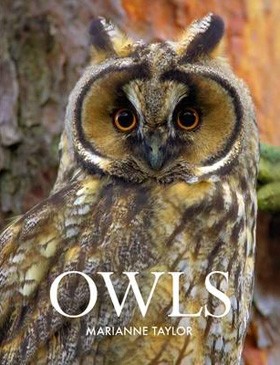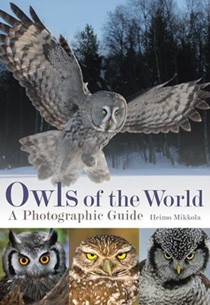Owls by Marianne Taylor, & Owls of the World: a Photographic Guide by Heimo Mikkola
In the recent days, two heavy slabs of owl-related literature have arrived on my desk, courtesy of Bloomsbury. I must state that this is in no way intended to be a direct comparison of the shortfalls and benefits of two: one concentrates on a general exploration of owls, their lives and their interactions with humans, followed by species accounts that present the owls of the Northern Hemisphere (as opposed to categorically detailing them in traditional field-guide fashion), while the other is a true photographic guide that covers the world's 249 species of owl in typical field-guide format. Therefore, each has a slightly different purpose and target audience, and thus such comparisons would only serve for unfair conclusions. But, simply because both explore these beautiful and charismatic birds in a wonderfully illustrative manner, I've decided to delve into the two publications in a single review.

But there is plenty more to the title than its photography. The first 96 pages offer a general introduction to owls as a whole, discussing just about every characteristic that makes them recognisable as well as typical life cycles, before discussing our own relationship with owls, the threat we pose and resulting conservation efforts that come about. The text is written in a simple and informative manner, making it a great book to learn from. I know for a fact that this is exactly the kind of book I would have loved as an impressionable youngster with a growing interest in birds: the sort of publication I would have spent many a post-Christmas hour poring over, lapping up the information on offer. That's not to say this is a book for kids, though; anyone would enjoy it, from those with a mere passing interest in wildlife to the most serious birder.
Having said that, let me make it clear this is not a field guide, nor is it intended to be. Don't expect to use the species accounts as a reference for comparing identification features of some of the more tricky Otus species, for example. Furthermore, given that its recent rediscovery in Turkey was arguably the most exciting ornithological news to occur within the Western Palearctic this century, I was genuinely surprised to see that the only reference to Brown Fish Owls within the region was of a small Israeli population that 'is probably now extinct'. That said, the accounts are otherwise of genuine quality, with exquisitely presented text that bustles with information, ranging from descriptions through to status and conversation. Needless to say, each species is illustrated by at least one captivating photograph.

There is no doubt that this is a marvellous resource for the world's owls that would undeniably look great on any birder's bookshelf, but is it complete? Photographic guides are always aesthetically pleasing, though sometimes fall short in terms of displaying key identification features. Owls of the World is no exception; although most species are illustrated by several photographs tackling differing ages and subspecies in a variety of poses, some are represented by just a single image, while the separation of similar species pairs is occasionally not dealt with substantially. For me, the most obvious demonstration of this was Long-eared and Short-eared Owl: two similar species with extensive distributions across the Northern Hemisphere for which more detail should have been included regarding their separation — in flight, for example. One could also argue that there are not enough images of birds in flight in general, although admittedly owls are a family that are invariably seen perched!
But both these minor criticisms are perhaps a little picky for a book which has been produced to the highest of standards. As with Taylor's Owls, Mikkola has illustrated his guide with photographs of the finest quality: three pairs of glowing eyes along the base of the front cover immediately entice the reader into a 500-page guide with no let-up in photographic endeavour. The text is overflowing with information that only a world authority such as Mikkola could share — this publication is true testament to his outstanding knowledge, gleaned from many years of pursuing nocturnal birds to the four corners of the globe and back. The £35 tag isn't cheap, but both quality and quantity of content justifies the price.
If you're an owl fan, you're going to love both of these books. Taylor's Owls is an attractively produced and easy-to-use non-fiction book that appeals to both the birder and non-birder alike. With its pseudo-field-guide design and layout, Mikkola's Owls of the World is undeniably a production geared towards the more serious birder. Despite their differences in target audiences, both are produced to a very high standard and deserve to prove popular this Christmas.
Hardcover, 224pp.
Bloomsbury (2012), ISBN 978-1408155530, RRP: £25.00
Owls of the World: a Photographic Guide by Heimo Mikkola:
Hardcover, 512pp.
Bloomsbury (2012), ISBN 978-1408130285, RRP: £35.00



